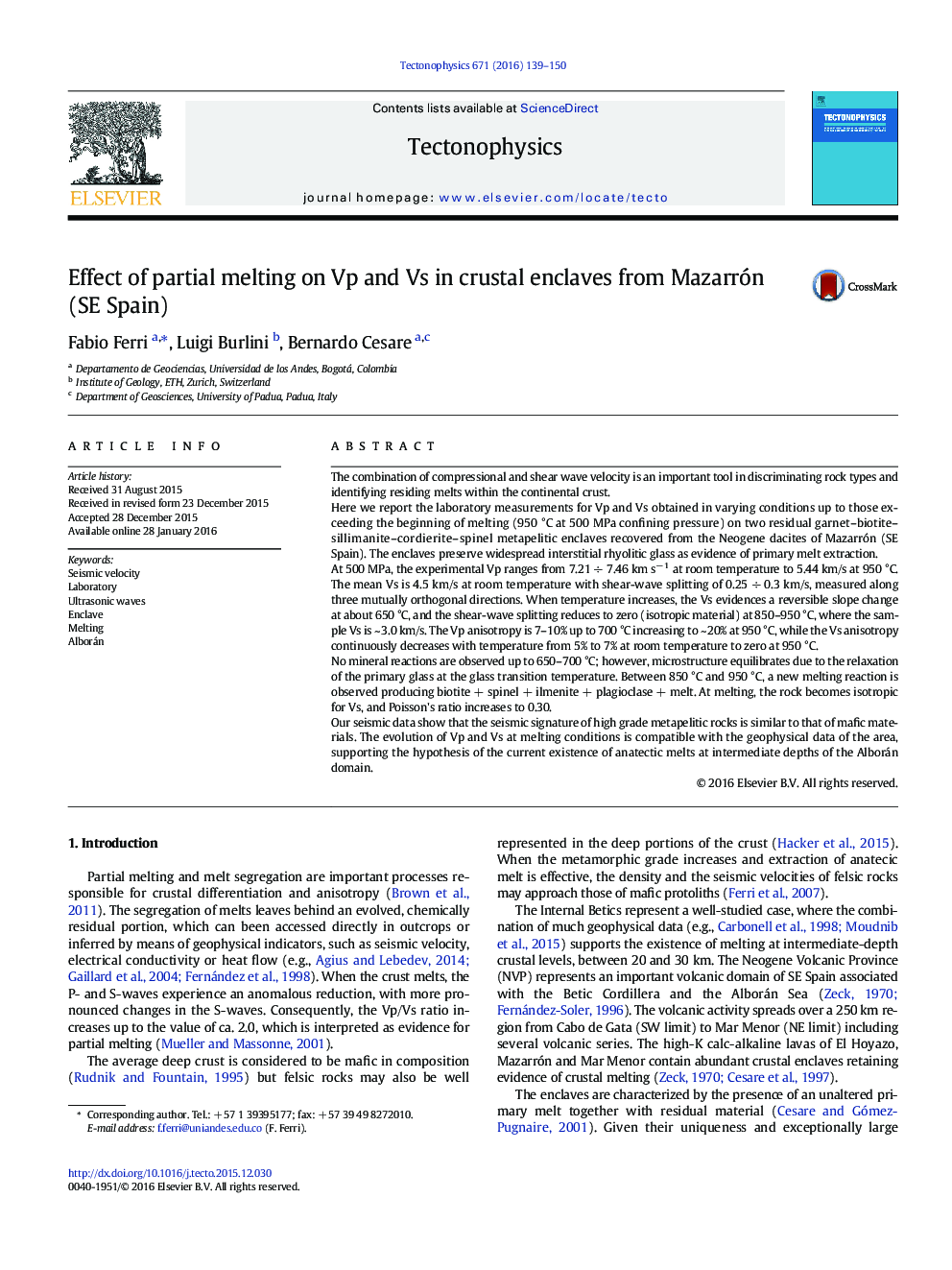| Article ID | Journal | Published Year | Pages | File Type |
|---|---|---|---|---|
| 4691330 | Tectonophysics | 2016 | 12 Pages |
•Ultrasonic laboratory measurements of Vp and Vs are performed up to crustal melting.•With melting, the Vp anisotropy increases and the Vs anisotropy decreases to zero.•The shear wave splitting of the crustal enclave becomes zero at melting.•Vp/Vs increases to about 1.8 at melting, consistently with field observation at Mazarrón.
The combination of compressional and shear wave velocity is an important tool in discriminating rock types and identifying residing melts within the continental crust.Here we report the laboratory measurements for Vp and Vs obtained in varying conditions up to those exceeding the beginning of melting (950 °C at 500 MPa confining pressure) on two residual garnet–biotite–sillimanite–cordierite–spinel metapelitic enclaves recovered from the Neogene dacites of Mazarrón (SE Spain). The enclaves preserve widespread interstitial rhyolitic glass as evidence of primary melt extraction.At 500 MPa, the experimental Vp ranges from 7.21 ÷ 7.46 km s− 1 at room temperature to 5.44 km/s at 950 °C. The mean Vs is 4.5 km/s at room temperature with shear-wave splitting of 0.25 ÷ 0.3 km/s, measured along three mutually orthogonal directions. When temperature increases, the Vs evidences a reversible slope change at about 650 °C, and the shear-wave splitting reduces to zero (isotropic material) at 850–950 °C, where the sample Vs is ~ 3.0 km/s. The Vp anisotropy is 7–10% up to 700 °C increasing to ~ 20% at 950 °C, while the Vs anisotropy continuously decreases with temperature from 5% to 7% at room temperature to zero at 950 °C.No mineral reactions are observed up to 650–700 °C; however, microstructure equilibrates due to the relaxation of the primary glass at the glass transition temperature. Between 850 °C and 950 °C, a new melting reaction is observed producing biotite + spinel + ilmenite + plagioclase + melt. At melting, the rock becomes isotropic for Vs, and Poisson's ratio increases to 0.30.Our seismic data show that the seismic signature of high grade metapelitic rocks is similar to that of mafic materials. The evolution of Vp and Vs at melting conditions is compatible with the geophysical data of the area, supporting the hypothesis of the current existence of anatectic melts at intermediate depths of the Alborán domain.
